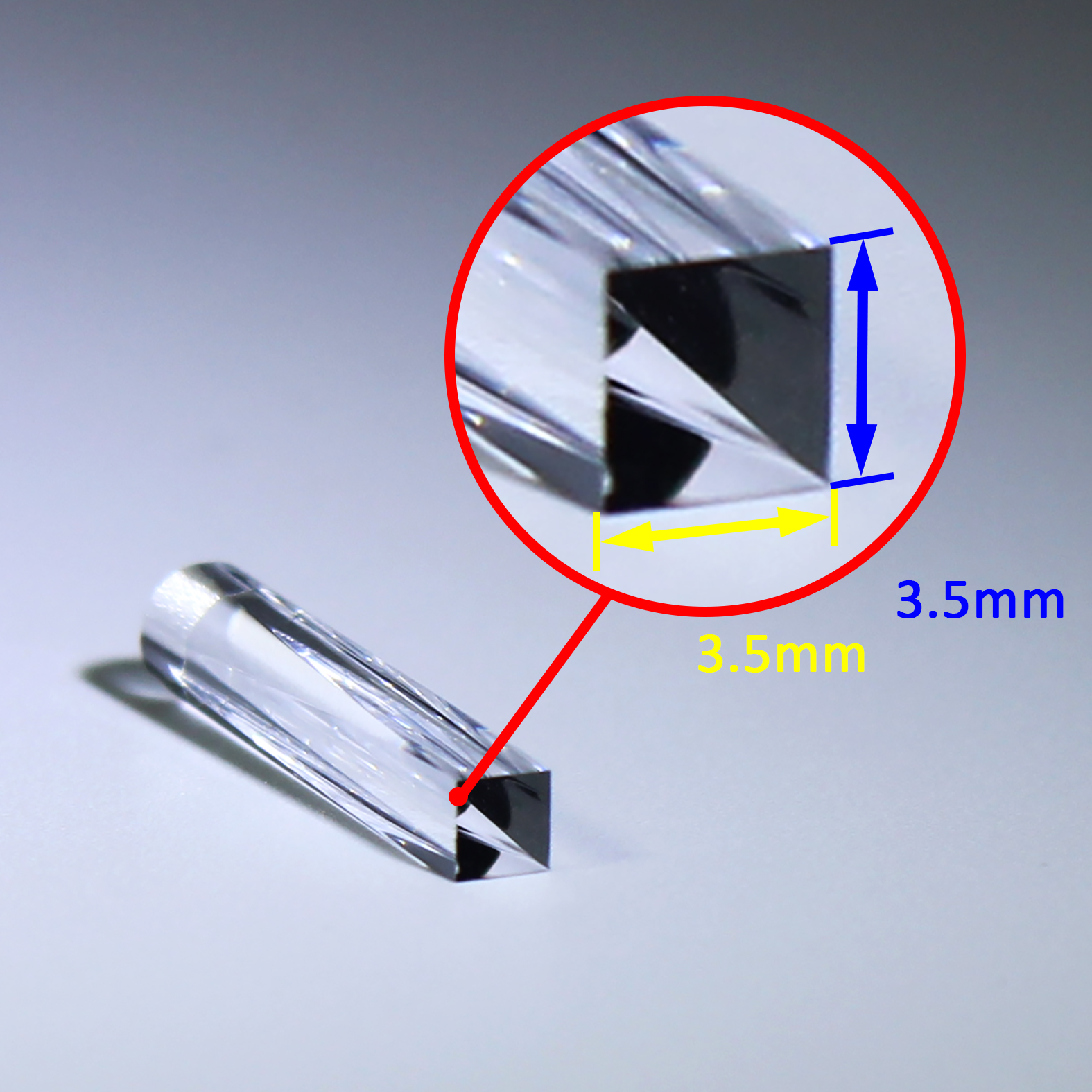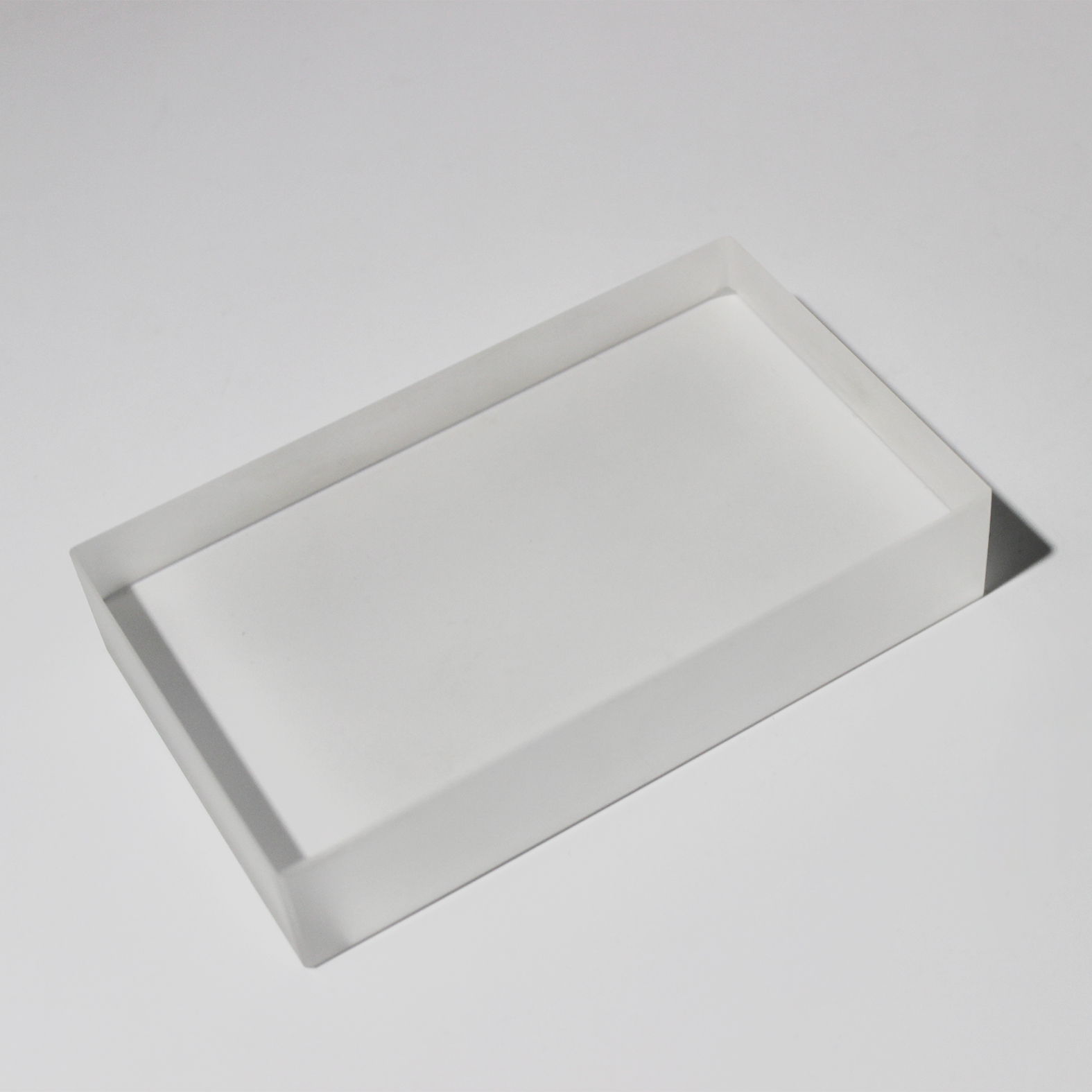
Optical High Transmittance Customized Rod Cylindrical Lens with AR Coating
Optical High Transmittance Customized Rod Cylindrical Lens with AR Coating
Item No: X-P23P9S1301
Rod Lenses are polished on the circumference and ground on both ends. Optical performance is similar to a cylinder lens.
- Material: K9, BK7 and other optical glass
- Dimension: 0.8mm-20mm
- Surface Accuracy: lambda/10
- Size Tolerance: +/-0/0.1mm
- Angle Tolerance: +/- 1 degrees
- Coating: Optional
Quote Now
What is rod lens?
Rod lenses are cylindrical lens which has the geometrical form of a cylinder and has a polished mantle, while the two flat end surfaces may be ground. It is analogous to a ball lens for
focusing in both directions.
Types of Rod Lenses
Rod lenses are available with different optical materials, glasses like fused silica and BK7, but also with crystalline materials like YAG or silicon, e.g. for infrared optics.
A rod lens can have diameters of a few millimeters, but there are also cylindrical microlenses with substantially smaller diameters. Small-diameter rod lenses are frequently used as fast-
axis collimators for diode bars.
Pictures of VY optical rod lens

Specifications of custom rod lens
| Material | Quartz |
| Surface | Full polishing |
| Application | LED light |
| Length | 25mm |
| Diameter | 5mm |
| Side length | 3.5mm |
Detailed video of crystal rod lens
Focal Length of optical glass rod lens
There are two different definitions of focal length of a rod lens. The effective focal length, which is the distance between a plane through the center of the lens and the beam waist of an initially collimated input beam, is given by the equation f=nD/4(n-1)
Drawing of optical rod lenses

People also ask
- What are lenses used for in optics?
Lens, in optics, piece of glass or other transparent substance that is used to form an image of an object by focusing rays of light from the object. - What is the difference between spherical lens and GRIN rod lens?
Unlike a traditional lens, a GRIN lens affects the optical path by varying the index of refraction within the lens itself. In contrast to a spherical or aspheric lens, all optical path lengths (refractive index multiplied by distance) are the same in a GRIN lens due to the radially varying refractive index.
Want to learn more / get a quote? Just click here to contact us now~ 
Related Products
ANYTHING YOU COULDN’T FIND?
Talk With Our Sales
Vyoptics dedicated to being the supplier you choose for your custom optic fabrication. From volume production to prototype, we will meet any require specifications at the most cost effective solution.
- Free quotes and design consultations
- Comprehensive brochure you can download
- Worry-free returns
- Lightning Delivery
- OEM&ODM
- Fast Respond Or enthusiasm
- Rapid Production
- Low MQQ
SEND US AN EMAIL
Contact Us
Welcome to discuss your purchasing requirements with our customer service.










